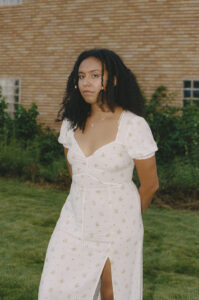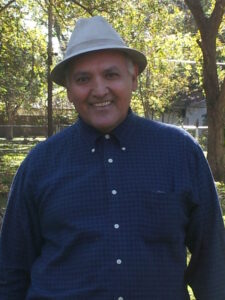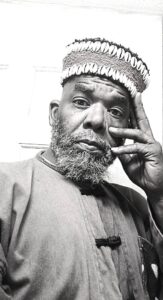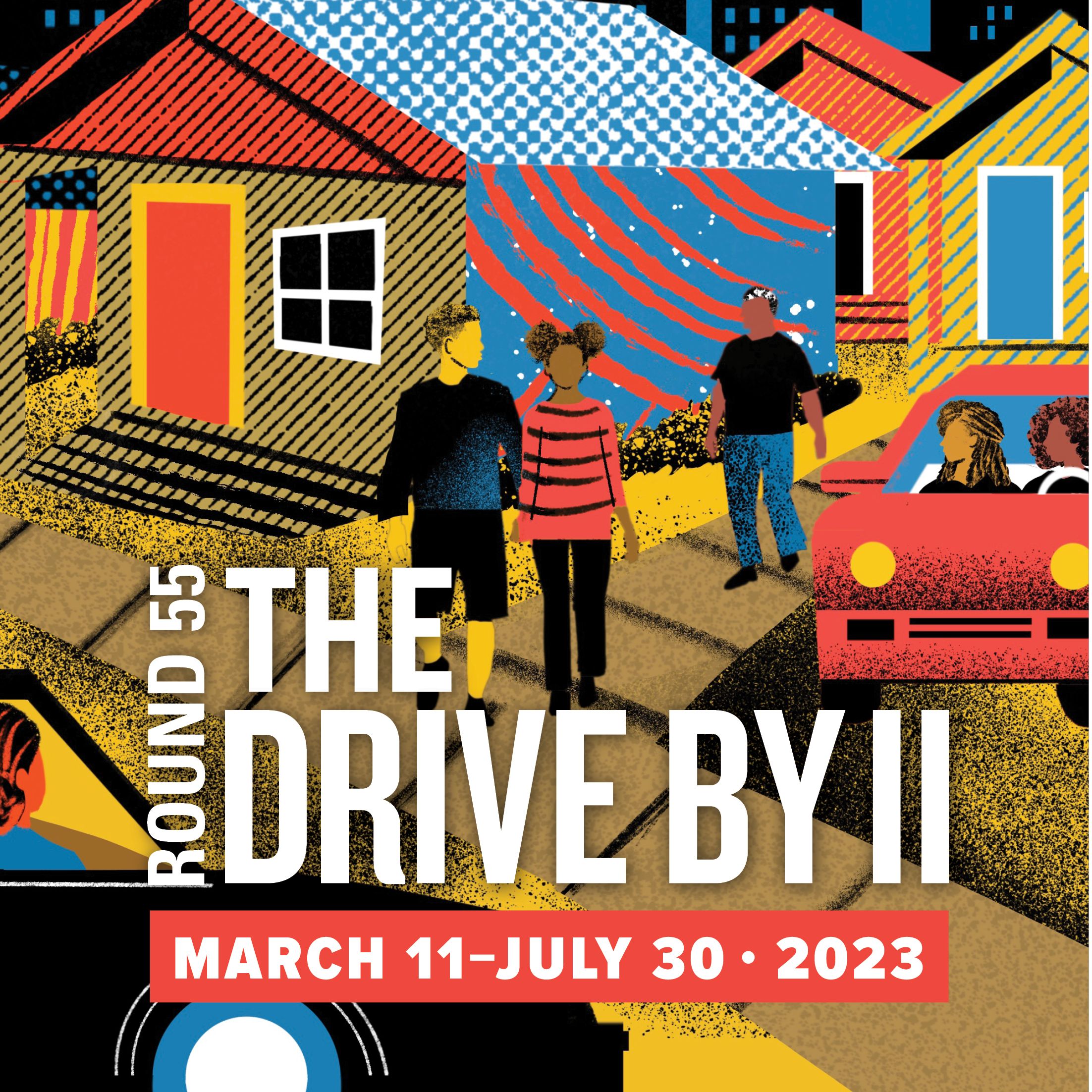THE DRIVE BY II
Porch Talks
Saturday, March 11, 2023 | 3-4PM
Opening + Community Market
Saturday, March 11, 2023 | 4-7PM
On View
Saturday, March 11, 2023 – Sunday, July 30, 2023
As artists, what do we have to offer? You are only as powerful as your sphere of influence. If you are doing what you can where you are, that is the best you can do..
- Jesse Lott excerpt from the Book Club Book 2011
As we kickoff this milestone occasion, it has been 30 years since Project Row Houses founding on July 5, 1993. Historic and groundbreaking in its goal, we are forever grateful for the seven visionary founders who built this organization with sweat equity, passion, determination, and the power and belief in Black liberation. All with various agendas, this group envisioned a place for artists to connect and create and it has now become a living monument to the power of collaboration, a place where Black people continue to be at the center of the conversation and a symbiotic relationship between art and social change.
Round 55: The Drive By II, is a historic reflection of the first Artist Round, created by our co-founder Jesse Lott, staged in 1993-94, The Drive By.
Our signature Rounds have played an integral role in maintaining the momentum of ongoing social justice art practices. Started as a way to experience art that was typically not shown in traditional galleries then and amplify a narrative and culture historically ignored, unseen, and invisible by institutions. It has subsequently prompted dialogue that has allowed us to explore various topics with artists, neighbors, activists, innovators, and practitioners such as Black Lives Matter, Gentrification, and that which relate to our community on a local, national, and international scale.
The first PRH Round was installed when the original row houses had not yet been fully restored, so most of the art was staged on the exterior allowing people to drive by slowly and view the art. At that time, driving by was as much as many were willing to do because social ills, including drive-by shootings, were all too common.
As an ode to our Round program 2023, The Drive By II will only activate the exterior of the houses. Once again, the public is invited to venture into the neighborhood and experience it in a new light through the lens of the artists intimately familiar with both its history and ongoing renaissance.
Artists participating in this Round include Gregory Michael Carter, Israel McCloud, Cat Martinez, Danielle Fanfair, Earlie Hudnall Jr., Ray Carrington, Irene Antonia Diane Reece, and Jesse Sifuentes.
These artists were selected for this Round to create a balanced intergenerational connection to Third Ward. Amidst the selected artists are those who have never shown at PRH, and veterans who have been at PRH since its inception like Israel McCloud, who participated in the first iteration of The Drive By.
Our goal is to continue to uncover meaningful ways to engage, especially Black and BIPOC artists who are amplifying the voices of people of color and are critically thinking about and thoughtfully preparing for Black futures while still taking an opportunity to reflect on history. What is society today doing to shape Black lives of tomorrow? How can we talk about the future while still talking about the past? It’s also exciting to celebrate and highlight what the community means to those invested in the progressive growth of Project Row Houses and its foundational hope for Third Ward. More importantly, what Third Ward means to PRH in its continued effort to shape the opportunities of a historic community impacted by inevitable change.
In asking the questions, we begin to discuss solutions for tomorrow. That is the best we can do.
– Danielle Burns Wilson, Curator and Art Director

About the Artists
2517: Irene Antonia Diane Reece
 Irene Antonia Diane Reece identifies as a contemporary artist and visual activist. Born and raised in Houston, Texas. She earned her BFA in Photography and Digital Media (Houston, TX) and MFA in Photography and Image-making (Paris, France). Reece’s photographic works, Black family archives, appropriated films, usage of text, and found objects create an insight into her world. The topics surrounding her work are racial identity, African diaspora, social injustice, family histories, re-memory, mental and community health. Reece’s objectives are to continue to take up space, be outspoken about the white-centric art world, and create forms of racial equity within her communities.
Irene Antonia Diane Reece identifies as a contemporary artist and visual activist. Born and raised in Houston, Texas. She earned her BFA in Photography and Digital Media (Houston, TX) and MFA in Photography and Image-making (Paris, France). Reece’s photographic works, Black family archives, appropriated films, usage of text, and found objects create an insight into her world. The topics surrounding her work are racial identity, African diaspora, social injustice, family histories, re-memory, mental and community health. Reece’s objectives are to continue to take up space, be outspoken about the white-centric art world, and create forms of racial equity within her communities.
Reece has exhibited Group exhibitions: FOTODOK (Utrecht, Netherlands), Lawndale Art Center (Houston, TX), Openwalls Arles (Arles, FR), Vogue Festival at BASE MILANO (Milan, IT), and, recently, Dak’Art: La Biennale de Dakar, (Dakar, Senegal). Awards include 2022 C/O Berlin Talent Award: Shortlist, The 30: New and Emerging Photographers to Watch, and MACK Books – First Book Award Shortlist: Billie-James. Her work has been featured in New York Times, Art Papers, OVER Journal, Lenscratch, FOAM Magazine, and The Photographer’s Green Book. Additionally with editorial contributions for ProPublica and a contributor for ‘You Are Your Best Thing’ Anthology by Tarana Burke and Brené Brown.
Billie-James
Billie-James is a growing photographic series displaying the artist’s experience being Black in the world she grew up in versus her father’s childhood. The work was to show the recurring patterns of events and memories that nothing has changed regarding the violence towards Black lives but also shining through that Black folks are thriving continuously. The play on using her family archives is a story-telling of rituals and traditions of Black southern values that have been passed down within her family. The gestures of Black love, family, tenderness, and embrace. This work began diving into what can–the memory/re-memory, the archives, and stories do to us. Over the years this work has blossomed into more than what we already know about the everyday navigation that our souls go through in this world. That Blackness is not linear but fluid, that Blackness is joy, a healer, a leader, a voice, and most importantly home.
“I imagine years from now, whenever I am physically unable to hold a camera or make art with my hands, I will go back to these bodies of work, much like my family albums, to find resolutions for my everyday life and continue to heal.”
– Irene Antonia Diane Reece (You Are Your Best Thing: Vulnerability, Shame, and The Black Experience, Anthology)”
2515: Danielle Fanfair

Danielle Fanfair is a writer, teacher, and director of integrated well-being and self-mastery. For over sixteen years, she has written, created curriculum, and taught and trained youth, adults, and professionals of all disciplines. Her Confusion to Clarity™ curriculum is a collection of interdisciplinary practices and strategies for creating psychologically safe spaces of belonging and trust. The result: individuals, communities, and companies who deepen their relationships, increase their productivity, sustain their flow states and expand their creative innovation.
Fanfair has loved words and has enjoyed creative writing since she was a young girl. Her writing talents have evolved into ghost-writing for a discreet client list, authoring articles for magazines and periodicals, personal and professional coaching resources, creating professional development curricula, lecture and training content, interdisciplinary event production, film production and executive strategy.
She helps individuals, groups, and organizations move from confusion to clarity, developing an understanding of how their personal story equips them to be a powerful contribution. Danielle has the gift of teaching and coaching adults to grow without utilizing guilt and shame as a motivator.
She holds a B.A. in Journalism and Public Relations from Baylor University and has experience curating and leading interdisciplinary arts experiences, vocational incubators, film production, performance coaching and professional development, and moderating arts exhibitions, healing retreats, and experiences. She’s penned articles for Arts + Culture Texas, Houstonia Magazine and published a series of workbooks called Go From Confusion to Clarity.
She’s merged her experiences and learning and wrote the Confusion to Clarity™ curriculum, a toolkit for personal and professional growth, story-sharing, dismantling oppression and compassionate understanding creating psychologically safe and inclusive environments, building long-term professional relationships, problem-solving, and communication. She works full-time as a writer and Director of Integrated Well-Being for a discreet client list that ranges from arts organizations to tech companies.
Words as Social Sculpture
I love the ingenuity, joy, and effectiveness of African American culture. Growing up as a Houston-native ‘80s baby, I learned to speak two ways. I learned how we talk at home–with more rhythm, intonation, accent, and creativity. Then I learned how to talk out in the world, sure to pronounce every consonant, and include those pesky hard “R’s” and “G’s” at the end of my words.
The way we spoke at home was funnier, faster, and frankly made more sense. Our speech in public spaces and mixed company felt like a collision in my mouth, all those consonants and unnecessary words jumbling up the cadence of what I wanted to say. Raised by educators, who would pause and ask me to add the letters and words I so desperately wanted to leave out, I learned to switch it up when talking with different generations, and in different rooms of the world. My writing career flourished when I learned how to “write like I talk” and connect with people at their core through the truthful intonations of my cultural lens.
African American English Vernacular is at once brilliant, efficient, and mellifluous. How does a people collectively agree on meaning, pace, intonation, and even non-verbal expressions that are as clear as they are pleasing? My intention is to explore the genius beneath the beauty, the codes, the perpetual outwitting of the privileged outsider, and the global impact AAVE has on communication as a generative oracle for meaning, relevance, and clout. This exhibition is a declaration that AAVE is professional. If a corporation uses AAVE to generate millions of dollars in profits, certainly its authors must be respected as the original content creators of generative and influential communication.
Aluminum DiBond is typically used for the exterior of gas stations. This medium is lightweight, slightly reflective, and extremely resilient against even the harshest elements. I use this futuristic-looking material as a nod to the Afro-futuristic impact that AAVE has on generations of language, meaning, and culture worldwide. Words and expressions in bold fonts printed on DiBond shapes represent the boldness of historically excluded people who, despite the best efforts of patriarchal white supremacy, continue to shape what is fresh, authentic, and cool. Each DiBond piece is fitted neatly together on the south-facing facade of the row house, transforming the house into a futuristic sculptural homage, honoring a few of the past and present founding authors of expressions and language that brings depth, texture, and subtext to every conversation.
Through simple instructions, participants can send their responses to be collected, archived, and integrated into the exhibition. We have the opportunity to acknowledge, revere, and honor the value, wisdom, and enduring influence of those who invent, upgrade and shape language, regardless of societal status. Each person, through their words, meaning and story, participates in the transformation and reshaping of their conditions, thinking, and structures that shape and inform our lives.
Words As Social Sculpture explores how AAVE uses words to build and shape how essential the free and respected expression of African Americans can call us into personal freedom. Understanding the meaning, knowing, and responses of those who interact with this exhibition gives us a glimpse of Black Futurism in action. How will these stories inform, teach, and shape us for years to come?
2513: Cat Martinez
 Cat Martinez is a mixed media artist with a BFA in sculpture and is a current MFA candidate at the University of Houston. As an artist she created the Zin Memorial, a sculpture of an Ankh that utilizes crystals and stones from and for the community of Third Ward. Martinez has exhibited work in Houston at Lawndale Arts Center’s 2021 Big Show and The Station Museum Contemporary Art’s group exhibition and symposium, In the Sun. She is a recipient of the University of Houston Cynthia Woods Mitchell Center for the Art’s 2021-22 Graduates Scholarship and is a lecturer for Convergence Research, a platform for interdisciplinary research, experimentation, improvisation, and performance. Davila-Martinez is also a founding member of the Black Woman’s Road Trip Collective.
Cat Martinez is a mixed media artist with a BFA in sculpture and is a current MFA candidate at the University of Houston. As an artist she created the Zin Memorial, a sculpture of an Ankh that utilizes crystals and stones from and for the community of Third Ward. Martinez has exhibited work in Houston at Lawndale Arts Center’s 2021 Big Show and The Station Museum Contemporary Art’s group exhibition and symposium, In the Sun. She is a recipient of the University of Houston Cynthia Woods Mitchell Center for the Art’s 2021-22 Graduates Scholarship and is a lecturer for Convergence Research, a platform for interdisciplinary research, experimentation, improvisation, and performance. Davila-Martinez is also a founding member of the Black Woman’s Road Trip Collective.
SLABS
I’m a multimedia artist whose work transcends medium. As a Black American sculptor, I explore the many facets of African diasporic experience. I draw inspiration from generations of familial knowledge. Steel, in particular, connects me with my ancestry, both my great-great grandfather, a blacksmith who was enslaved, and the Yoruba worship of Ogun, the god of iron and war. From crochet to clothing design to leather and metal work I use materials to explore femininity, connect with community and share the beauty of the world from my perspective. I create mystery, and like the Griot, I tell stories. Materiality is a cornerstone of my practice. I strive to use my creativity to make a positive impact on our world.
When I started thinking about Third Ward and it being the foundation of Houston’s Black music and culture, I thought about how I was personally drawn to the community.
I was born in the Midwest; St. Louis, Mo. I moved to Houston during the city’s hip-hop boom, so at that time the culture was all about the SLABS – slow, loud, and banging music.
Slabs began to emerge in Houston’s African American communities in the mid-1980s and gained popularity in the 1990s thanks to the city’s hip-hop culture and the new sounds of chopped and screwed music created by DJ Screw. So, the SLAB will be the highlight of my public art installation.
In the 90’s MacGregor Park located in Houston’s Third Ward, was the spot to be for the city’s youth. Local celebrities such as Fat Pat, Lil Keke and DJ Screw to name a few would be amongst the crowd. The parade of highly customized cars would bring great excitement to everyone. The purpose of my art piece is focused on the nostalgia of that time period and segment of a larger community from which I experienced personally.
Listen to Cat’s 90’s H-town SLAB playlist:
2511: Jesse Sifuentes
 Houston-based ceramic artist and muralist Jesse Sifuentes was born in Kingsville, Texas and grew up in Galveston, Texas, where he attended Ball High School.
Houston-based ceramic artist and muralist Jesse Sifuentes was born in Kingsville, Texas and grew up in Galveston, Texas, where he attended Ball High School.
His art teacher, recognizing his exceptional talent as an artist, strongly encouraged him to pursue art beyond high school.
With the support of a Moody Scholarship, Sifuentes enrolled in the prestigious art program at Texas Southern University founded by nationally renowned artist and muralist Dr. John Biggers and sculptor Carroll Simms, becoming the first person in his family to attend college.
Another scholarship allowed him to travel to Mexico City where he studied the work of the great muralist Diego Rivera. Following his graduation from Texas Southern University, Sifuentes received a Master’s in Fine Arts from the University of Houston. He has exhibited his ceramics in numerous exhibitions, has created 8 murals, and assisted with many public art projects. He retired from the Houston Independent School District after 27 years of service as an art teacher. He is currently an instructor at Texas Southern University’s Art dept.
An Ode to Dr. Biggers
My name is Jesse Sifuentes, I am an artist living and working in Houston’s East End. Born and raised on the Texas’ Gulf Coast, from Kingsville to Galveston to Houston, the region has seeped into the imagery and content of my artwork. I grew up on the island of Galveston, Texas and moved to Houston for the opportunity to study under the renown muralist John Biggers and sculptor Carroll Simms, who were building an art department at Texas Southern University. Their work and dedication to art uplifted and celebrated the community and rich culture that bore them has been a lifelong inspiration to me. Following Dr. Biggers, I have aimed to create public artwork that uplifts and celebrates the communities that host the work.
I have grown up, been educated, lived, worked, and raised a family in Houston’s East End. But I am also connected to this community artistically. I have contributed several public artworks to the Houston area. In each project, I consider how the work will reflect and celebrate the community that houses the work. As a public artist, I have a responsibility to create artwork that is owned by the local public. This requires knowing and understanding the community I serve as an artist. For example, some of the works I have been commissioned were in tandem with anti-graffiti programs. This presents a particular challenge in that I am tasked with creating work that is embraced by the public and engenders respect amongst the community, including those that tagged the building prior to the work going up. The public space is then embellished into something that the neighborhood can be proud of and call their own. Furthermore, this sense of community pride becomes community empowerment and inspiration.
Dr. Biggers once stated that the artist has a responsibility to the public as a “documenter” of the affairs that affect the community. There are some things that cannot be ignored and should be addressed in words, note or brush.
2509: Gregory Michael Carter

Gregory Michael Carter is a Houston born artist and community activist. He lives and works between St. Louis, MO, and Houston’s Third Ward, which was recently declared a historic district. He attended Morehouse College, in Atlanta, Georgia and studied Fine Art, Art History and Computer Science. Gregory is fascinated by culture, as well as history. Those tenets are two of driving factors in his practice. After leaving Morehouse he traveled to 30 countries, and visited more than 50 UNESCO world heritage sites. The influence of those experiences on his work cannot be understated. Gregory is an interdisciplinary artist working primarily with drawing, printmaking, painting, collage, and photography. The community activism/social practice aspect of his practice has held many forms over the years, but most recently it has manifested itself in the form of an arts nonprofit he’s developing in St. Louis. Gregory is also the Co-founder of Thirdwardsfinest.com, an online retailer dedicated to supporting and uplifting the neighborhood he grew up in and loves so much. The brand donates half of its revenue to local nonprofits like Project Row Houses, Shape Community Center, and others. In 2022, Gregory’s work was on view at the San Antonio Museum of Art, as part of the Texas Biennial. Since then, he has participated in a lengthy residency in Marrakech, Morocco at the Montresso Foundation. This residency culminated in an exhibition that was part of the 154 Art fair in Marrakech, which took place in February of 2023.
Pure Facts and Empirical Data
I am an interdisciplinary artist born in Houston, Texas working primarily in drawing, painting, collage, and photography. In trying to learn to understand my own time, I have become emerged in the years piled up behind me. The result/response has been a grand interrogation into history, culture, philosophy, psychology, and the human response to war. My practice is fueled by this ongoing search for understanding. For much of my adult life, I’ve felt like an enemy combatant living behind enemy lines, even when I’m at home. These new works are manifestations of that sentiment. They could be compared directly to hieroglyphs, or the coded quilts that doubled as maps that slaves used to escape plantations in order to gain their freedom. They seek to emulate modern relics, on stone, papyrus, and Newport Carton boxes. They seek to tell a true history of my family, my community, and my culture in a land controlled by my oppressor.
2507: Israel McCloud
 Israel McCloud is a multi-disciplinary artist whose creative track-record transcends conventional categories. A third-generation artists, his professional palette of visual art, design, performance and literary arts encompasses forty years of prolific productivity. McCloud has exhibited at the Museum of Fine Arts Houston, Contemporary Arts Museum Houston, Lawndale Art Center, Meredith Long Gallery, as well as abroad in Paris, France and Amsterdam, Netherlands. He performs spoken word poetry and literary readings throughout Houston, while actively pursuing a full-time commitment to public art and creative art design services.
Israel McCloud is a multi-disciplinary artist whose creative track-record transcends conventional categories. A third-generation artists, his professional palette of visual art, design, performance and literary arts encompasses forty years of prolific productivity. McCloud has exhibited at the Museum of Fine Arts Houston, Contemporary Arts Museum Houston, Lawndale Art Center, Meredith Long Gallery, as well as abroad in Paris, France and Amsterdam, Netherlands. He performs spoken word poetry and literary readings throughout Houston, while actively pursuing a full-time commitment to public art and creative art design services.
“Utilize every canvas possible in a positive way to speak to the people. Say something with your life, say something with your gift.” – Israel McCloud
House Being Home As Garden
Listen attentively and you’ll hear the terms “organic” and “sustainability” as key references of any narrative pertaining to wholistic well-being and longevity. While the merits of a healthy “physical” lifestyle cannot be underscored, a bigger picture prevails. House Being Home As Garden recognizes and portrays every house as potential soil. A fundamental starting point where life, family, community, self-awareness and other values are grown. The peaceful euphoria one experiences immersed in a beautiful garden is synonymous with the cultivated “harvest” a well-tended home produces. The elders used to say, upon seeing someone ill-mannered, unruly or negatively dispositioned, “So-and-so has no home training.” They understood the connectedness of beginnings, the transformative qualities of seed, plant, blossoming metaphorically. My “house” is a garden growing beauty, truth and indispensable light. It is my hope that upon viewing it, the individual grows momentarily aesthetically and spiritually. There components are inseparable in the development and advancement of any community and society. Just as the original founders of Project Row Houses envisioned purpose and relevance in the abandoned possibilities, I challenge myself and the community to repurpose the concept of “house.” Our individual seeds, or contributions, are integral to the unchecked growth of the garden within the house, that blossomed into a home, located in a neighborhood, comprising a community within a city that is part of a ration…inseparable from the world
That which is sown is grown.
2505: Ray Carrington and Earlie Hudnall

Ray Carrington was born in Austin, Texas on June 25, 1948. His family moved to Corpus Christi, Texas when he was in the third grade. At the time, he was the middle child with four siblings. After his parents divorced, they moved to Corpus Christi, Texas and his mother remarried and had a baby girl.
His family lived a simple life of home, school and church. As he grew, he eventually fell in love with tennis. That was a rare and beneficial experience as he was recruited by the University of Houston (UofH) and Texas Southern University (TSU) to play on their tennis teams.
He was eventually recruited by Herbert Provost, TSU’s tennis coach. He became a star tennis player in the SWAC and grew a close fatherly bond with Coach Provost. Carrington feels that he owes so much of his success to Provost and his wife, Georgia Provost.
Carrington is now retired from a career of photography instructor and is married to Regina Carrington with two children and two grandchildren.

A Tribute to the 25th Precinct
For many years, we have worked together in many venues. We have photographed everything from politicians, movie stars, athletes, college students, and preachers. But our favorite subjects are here in Third Ward-Houston, Texas. And with a total of 114 years of combined experience, we have seen and known so much of the community in this part of Houston, Texas.
As we began our friendship, we became more like brothers. We have had the same photography teachers and experiences. As we have grown older, we have seen how important it is to capture the people and events of where we live, what we own, and where we go to school and church.
We are proud to participate in Round 55 as it is a sample of what we have done throughout our lives. And more than that, what we wish to inspire onto others of the next generations. We truly believe that we are the best in telling our own story. This is our history, and we hope to leave a path for the young who will follow us.
We owe a lot to those who have been our supporters. Some of which include Herbert and Georgia Provost, Rodney Evans, John Biggers, Dr. T.F. Freeman, Louise Martin, Alvin McEwing, Nathaniel Sweets and Benny Joseph. Without their help, this would not have been possible.

